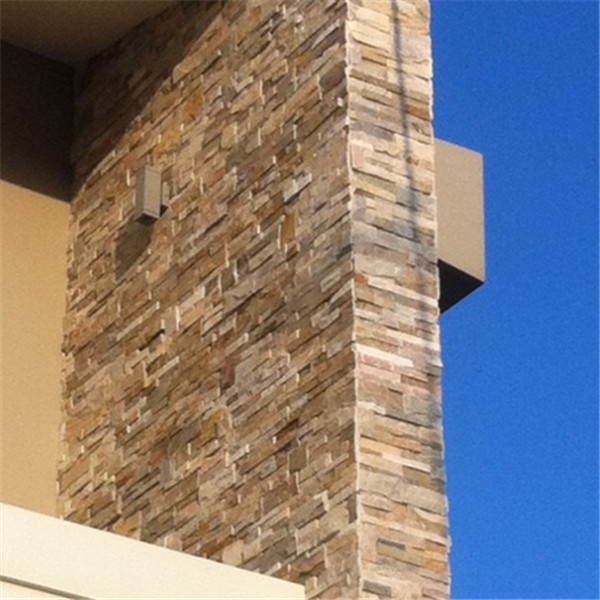Bluestone has long been admired for its natural beauty, durability, and versatility in various architectural and landscaping applications. In recent years, a new innovation has emerged in the realm of construction and design – cultured bluestone. This engineered material combines the timeless appeal of bluestone with modern technology to offer a wide range of benefits and possibilities. In this article, we will delve into the world of cultured bluestone, exploring its characteristics, uses, advantages, and the impact it has had on the industry.
1. Understanding Cultured Bluestone
Cultured bluestone is a man-made product that replicates the look and feel of natural bluestone through a carefully controlled manufacturing process. It is composed of a blend of natural aggregates, pigments, and binders that are molded and shaped to mimic the texture, color, and pattern of authentic bluestone. The result is a high-quality material that closely resembles the natural stone but offers greater consistency and uniformity in terms of size, shape, and color.
One of the key features of cultured bluestone is its versatility. It can be customized to meet specific design requirements, allowing for a wide range of shapes, sizes, and finishes to be achieved. From traditional square pavers to irregular flagstones and intricate mosaics, cultured bluestone can be tailored to suit various aesthetic preferences and project needs.
2. Applications of Cultured Bluestone
Cultured bluestone finds applications in both indoor and outdoor settings, making it a popular choice for residential, commercial, and public projects. Some of the common uses of cultured bluestone include:
- Flooring: Cultured bluestone tiles and pavers are often used for indoor flooring in kitchens, bathrooms, living rooms, and other areas where a durable and visually appealing surface is desired.
- Patios and Walkways: Cultured bluestone pavers are a popular choice for outdoor patios, walkways, and pathways due to their slip-resistant surface and natural stone aesthetics.

- Ledge stone for affordable housing : Cultured bluestone can be used to create stunning pool decks that enhance the overall look of the outdoor space while providing a comfortable and safe surface for walking.
- Wall Cladding: Cultured bluestone panels can be used to clad interior and exterior walls, adding texture and character to the space.
- Countertops and Vanities: Cultured bluestone is also used for kitchen countertops, bathroom vanities, and other surfaces where a durable and stylish material is required.
3. Advantages of Cultured Bluestone
Cultured bluestone offers a multitude of advantages that make it a preferred choice for architects, designers, and homeowners alike. Some of the key benefits of cultured bluestone include:
- Consistency: Unlike natural bluestone, which can vary in color, texture, and thickness, cultured bluestone offers a high level of consistency in terms of appearance and quality, ensuring a uniform finish across the project.
- Durability: Cultured bluestone is engineered to be highly durable and resistant to wear, stains, and weathering, making it ideal for outdoor applications where exposure to the elements is a concern.
- Versatility: Cultured bluestone can be customized in a variety of shapes, sizes, and finishes to suit different design preferences, allowing for greater creativity and flexibility in project planning.
- Cost-Effectiveness: Cultured bluestone is often more affordable than natural bluestone, making it a cost-effective option for projects with budget constraints.
- Ease of Installation: Cultured bluestone is typically lighter and easier to handle than natural stone, which can help reduce installation time and labor costs.
4. Environmental Impact of Cultured Bluestone
In addition to its aesthetic and functional benefits, cultured bluestone also offers environmental advantages that contribute to sustainable construction practices. By utilizing recycled materials and minimizing waste during the manufacturing process, cultured bluestone helps reduce the environmental footprint associated with traditional stone extraction and processing. Furthermore, the longevity and durability of cultured bluestone products contribute to the overall sustainability of a project by minimizing the need for frequent replacements and repairs.
5. The Future of Cultured Bluestone
As the construction and design industries continue to evolve, cultured bluestone is expected to play a significant role in shaping the built environment. With advancements in technology and manufacturing techniques, we can expect to see even more innovative applications and designs utilizing this versatile material. From cutting-edge architectural facades to sustainable urban landscapes, the possibilities with cultured bluestone are endless.
In conclusion, cultured bluestone represents a harmonious blend of tradition and innovation, offering the timeless beauty of natural stone with the benefits of modern engineering. Its versatility, durability, and environmental sustainability make it a valuable asset in the world of construction and design. Whether used for flooring, paving, cladding, or countertops, cultured bluestone continues to inspire creativity and elevate the aesthetic appeal of architectural spaces. Embracing this innovative material opens up a world of possibilities for creating stunning and enduring designs that stand the test of time.
